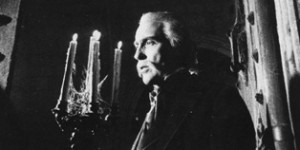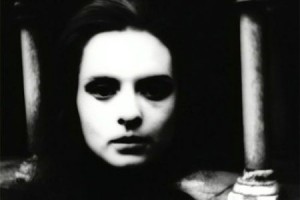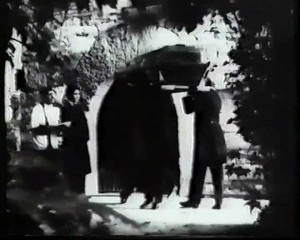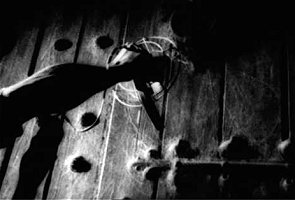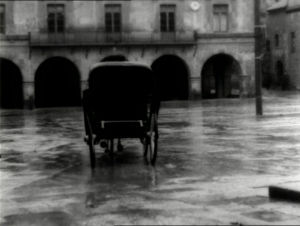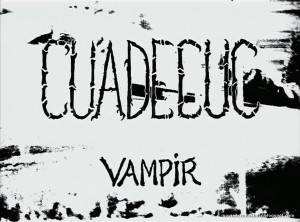Commissioned by Stanley Schtinter in the summer of 2019 for the limited LP release of Carles Santos’ soundtrack score for Pere Portabella’s Vampir Cuadecuc in early 2020. I received a copy of this LP from Stanley earlier that month — on the final day of a Portabella retrospective in London that began in November, when I gave a lecture at Close-up and Portabella himself, who’d just turned 93, was amiably present. — J.R.
Masterpieces have many possible ports of entry. My own passport into Pere Portabella’s Vampir Cuadecuc (1970) — first seen multiple times at the Directors’ Fortnight in Cannes in 1971 and then celebrated in my festival coverage for the Village Voice — was composed of rampant cinephilia crossed with political ignorance, as well as a fascination with William S. Burroughs’ use of cut-ups in Naked Lunch (1959), The Soft Machine (1961-1966), and The Ticket That Exploded (1962-1967) to create scrambled syntax (echoed in Portabella’s capacity to shift his narrative focus within single shots from the Dracula story itself to the filming of it). I knew then that Portabella, one of the Spanish producers of Luis Buñuel’s Viridiana, had his own passport confiscated as punishment by Francoist Spain, accounting for his absence in Cannes, and that his film was mostly a silent documentary of the shooting of an adaptation of Bram Stoker’s Dracula by one Jesus Franco, accompanied by musique concrète. But the implied multiple relationships and rhyme schemes between the two Francos and Dracula and the Catalan language were beyond my comprehension, and it was only after the soundtrack’s composer, Carles Santos, contacted me in Paris for a couple of friendly meetings over a year later — after I had seen and reviewed Portabella’s subsequent Umbracle at Cannes, with an equally adventurous, witty, and aggressive Santos soundtrack — that I began to understand his own work as an autonomous as well as interactive entity. (Even then, there was a language barrier between us, a related form of political ignorance, and Carles’ friend Dorothée Selz, a talented practitioner of Food Art who worked with pastry sugar, had to serve as our interpreter.)
Mistaking Carles for Carlos, Vampir for Vampyr, and not even knowing then that “Cuadecuc” was part of the latter’s title, I had no understanding then of the roles played by the Catalan language and identity in the Portabella-Santos collaboration, much less the implied parallels between the two Francos.
In the Voice, I’d written, “A remarkably varied soundtrack plays against [Portabella’s] silent imagery: the barking dogs, jet planes, drills, operatic arias, Muzak melodies, and sinister electronic drones all ingeniously locate Dracula and our perception of him in the modern world. Speech occurs only briefly in one sequence near the end — when Christopher Lee describes the death of Dracula, and then reads the scene from Stoker’s novel — and its effect, much like that of the other sounds, is only to highlight the brooding silence that Portabella’s world breathes in.” But all this assumed a three-way conversation between sound, image, and active audience member, with the sound offering witty, ironic 20thcentury asides and overlaps to the 19thcentury settings of Stoker and Jesus Franco. Heard in isolation from the images, as this vinyl proposes, Santos’ work creates a different kind of dialogue — a kind of metaphysical conversation with silence and darkness. Hearing this musique concrète alone grants it a philosophical depth exceeding nationality and ethnicity.

